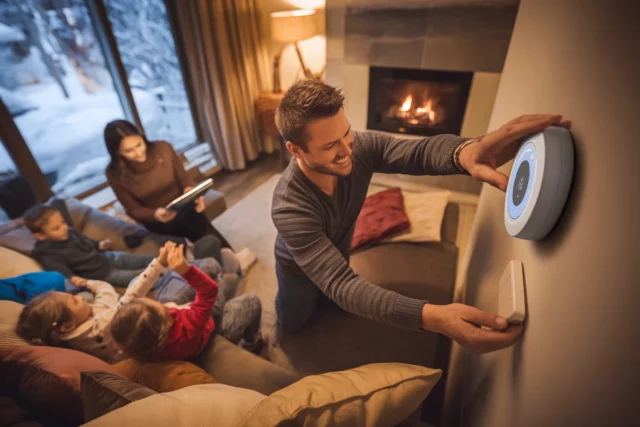As winter approaches, heating systems are back in use in homes across the country. It’s time to consider the optimal temperature that ensures comfort while minimizing energy consumption. With rising energy prices, finding the right balance between warmth and savings is more crucial than ever. But what indoor temperature will keep both your health and wallet in check? Let’s find out.
the importance of indoor temperature for your health
First and foremost, it’s important to understand that the ideal temperature depends on numerous factors: who lives in the home, their habits, health conditions, geographical location, humidity levels, and even the type of activities performed at home. For instance, heating an urban apartment differs from heating a countryside house.
The World Health Organization (WHO) has extensively studied this topic and recommends a minimum indoor temperature of 64°F (18°C) in temperate climates. Lower temperatures may negatively impact health. Cold conditions can lead to respiratory issues, worsen asthma, or cause vasoconstriction, thereby stressing the circulatory system. For vulnerable groups like children, the elderly, or those with chronic illnesses, WHO suggests a higher daytime temperature around 72-75°F (22-24°C), and 64-68°F (18-20°C) at night.
optimal temperature for maximum comfort and energy efficiency
If you’re healthy, the Institute for Energy Diversification and Saving (IDAE) advises maintaining an indoor temperature between 69-73°F (21-23°C) during the day and between 59-63°F (15-17°C) at night. This range maximizes energy efficiency while keeping a reasonable comfort level. The goal is to avoid exceeding 73°F (23°C), as each additional degree increases heating needs by 5-10%, leading to higher bills. Excessive heat can also dry out the air, causing discomfort especially during cold nights.
ideal temperature for each room in your home
The ideal temperature varies from room to room. For example:
- The bedroom should be cooler than the living room.
- The bathroom requires specific adjustments; using a portable high-efficiency heater briefly is advisable.
This method prevents raising the overall house temperature excessively and consuming too much energy.
Similarly, kitchens don’t need constant heat due to cooking appliances that generate warmth. A temperature around 64°F (18°C) is sufficient since it’s not a space where extended time is spent. Keeping it cooler than living areas helps maintain an optimum environment for refrigeration equipment.
a flexible heating system: key to savings
The ideal scenario involves having an adaptable heating system capable of adjusting temperatures room by room:
- A living room should be slightly warmer than a bedroom.
- A bedroom warmer than a kitchen or bathroom.
If you have a central thermostat, place it in a moderately frequented area with good ventilation to avoid inappropriate adjustments elsewhere in your home.
In summary, thoughtfully managing room-specific temperatures will allow you to enjoy optimal comfort while reducing energy waste. Employing efficient targeted heating helps safeguard your health, lowers bills, and supports environmental conservation.


















